Up close and personal – the 2016 Rolex Explorer 214270 vs. the previous 214270, from an owner point of view (and an in-depth history of the Explorer)
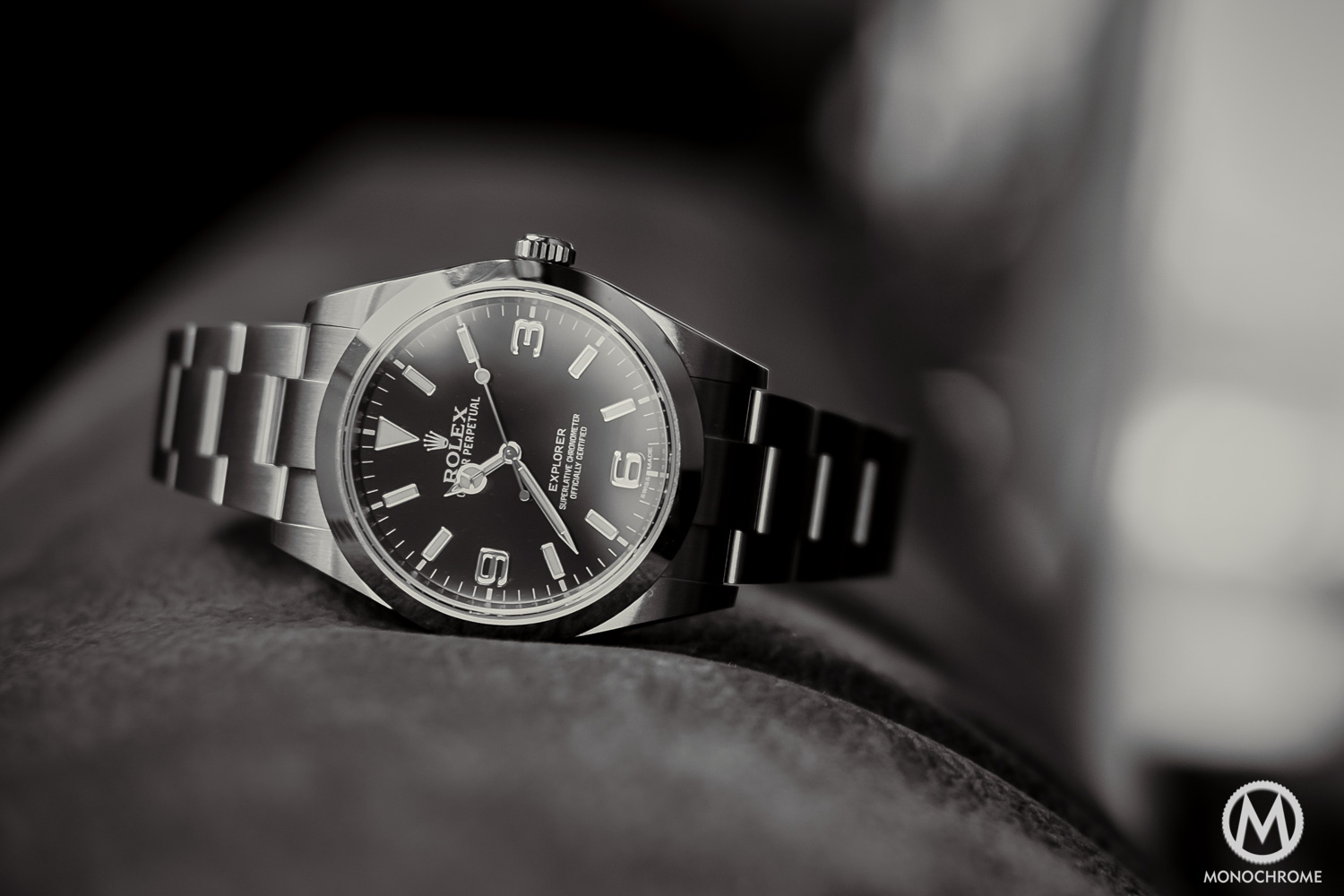
Rolex is perhaps one of the few companies in the world that benefits from the unique position to have a catalog full of iconic products. It is a company that is loved with passion and hated with the opposite feelings. It is a company that surpassed brand awareness around the globe. Everyone, and I mean EVERYONE, knows Rolex. There are many things that can be said but an undeniable fact is that Rolex produces consistently fine watches that are industry’s benchmarks. From the DateJust and the Day-Date, to the professional watches developed be used as tools for a specific job, like the early Explorers and the Turn-o-graph, which led to the archetypal Submariner, the GMT Master and the Milgauss and later the Cosmograph (Daytona) and finally the Sea-Dweller and the Explorer II. Every single one a legend in its respective category among other models from competitive brands.
The real big problem for me – and I think for almost everyone actively in the market for a Rolex watch – is how you choose. Which model should I buy? Budget matters aside, I think this comes down to your aesthetic criteria and, of course, to the unique charm of each model. Having all these on my mind and probably many more considerations, I chose the Rolex Explorer Ref. 214270, for me the archetypal Oyster professional watch. Recently, Rolex revamped the model, keeping the same reference number while introducing small but very important changes – a new watch version that we’ll called the Mk2. Therefore, in this review I will use my watch as a reference point and of course analyse the differences and how I feel about them. But first we will go back in the past, for a small history lesson…
The history of the Rolex Explorer
The birth of the Oyster automatic watch started during the 1920s, when Hans Wilsdorf (founder of Rolex) realised that users could easily forget to screw down the crown of their manual winding watches and as a result, water would enter the case. The oyster case and the crown needed a new component in order to be perfected. The patent for the automatic watch was owned by the Harwood factory in 1920s, so Rolex had to produce the automatic watch based on a whole new concept. This coincided with the Harwood Company getting out of the business because of bad management. The timing was perfect and Rolex proceeded by adopting the basic 360-degree automatic winding rotor that made the movement thicker than normally. The solution was a curved case-back, in order to accommodate the calibre. The Bubbleback was born.
 The true Rolex Bubbleback watches were produced from 1933 to 1955 and it was, on a larger scale, what made Rolex as we know it today – since it was based on the actual formua that combines a hermetical construction (case and crown) that perfectly protect the reliable automatic movement from external elements. This series of watches had many configurations and shared the ethos of the company for a dependable, waterproof and sturdy watch, which due to its automatic calibre, could be worn all the time by its user. The variability of the Bubbleback was amazing. There were more than seventy models according to Rolex literature records. Six generations in total, 6/7 case and caseback types, 11 types of minute and second hands, six types of bezel and over 100 types of dials.
The true Rolex Bubbleback watches were produced from 1933 to 1955 and it was, on a larger scale, what made Rolex as we know it today – since it was based on the actual formua that combines a hermetical construction (case and crown) that perfectly protect the reliable automatic movement from external elements. This series of watches had many configurations and shared the ethos of the company for a dependable, waterproof and sturdy watch, which due to its automatic calibre, could be worn all the time by its user. The variability of the Bubbleback was amazing. There were more than seventy models according to Rolex literature records. Six generations in total, 6/7 case and caseback types, 11 types of minute and second hands, six types of bezel and over 100 types of dials.
The legend of the Bubbleback forged Rolex reputation for the public. This, and the fact that the company was a pioneer in product placement through media, created the halo that surrounds its name, even today. Quite early (1927) there was the English Channel crossing by a young English swimmer named Mercedes Gleitze. She wore on her neck a Rolex Oyster and the watch remained in perfect working order at the end of the 10-hour swim. To celebrate this achievement, Rolex published a full-page ad on the front page of the Daily Mail, claiming the success of the waterproof watch. Flying over the Everest in 1933 (crew using Rolex Oysters) and the connection of the company with the speed demon sir Malcolm Campbell were important public boosts. However, it was the attempt of mankind to conquer the highest peak of the world that was the real global event that the company needed, in order to prove to the world how superior Rolex watches were. Rolex knew its watches to be reliable and accurate, but by issuing them to various expeditions, they managed to test them in hostile conditions – and in parallel to benefit from a large exposure.
Now we enter the Explorer era. For me a very important, perhaps the most important Oyster Professional watch the company has ever produced, since it marks a clear demarcation line between the past watches and the Rolex we know now. Rolex supported the Himalayan expeditions since 1933, and later in Everest expeditions. Rolex had always been the official supporters, and they provided each exploring team with their wristwatches. However, Rolex was not the only supporter: it is said that when Edmund Hillary climbed up on the top of Everest, he wore a watch from the British company Smiths. But what Tenzing Norgay wore was indeed an Explorer (Ref. 6098).
The Everest Expedition in 1953
The Explorer was based on the already existing and sturdy Bubbleback series of watches, which has been modified by Rolex for its more audacious clients. In 1952, the references 6098 and 6150 (both using the A296 movement) were in fact the first prototype watches to be used by climbers; they were watches with white dials and leaf shaped hands, which didn’t bear the name Explorer yet. In 1953, these models became the references 6298 and 6350, when they were fitted with the typical Explorer-type 3-6-9 dial and later with the Mercedes hands. Before Hillary and Norgay climbed the Everest, Rolex didn’t name their watches Explorer. Although Rolex registered the Explorer trademark on January of 1953, the Explorer gained its name after Hillary and Norgay climbed up the Everest and “Explorer” began to be added on the Ref. 6350, at the end of 1953.
A Rolex 6098 – Pre-Explorer
The Rolex Explorer Ref. 6350 was especially intended for Explorers: it had a highly legible dial design (the defining characteristic of the model), its case was also strengthened and the movement used special lubricants, making this watch functional between -20° C and +40° C. It was made for a year and then replaced with the Ref. 6150, which was stopped in 1959 and replaced by Ref. 6610, which was almost the same except the back being flatter, since the new reference used the new Calibre 1030. It was a 36mm watch, water resistant to 50m.
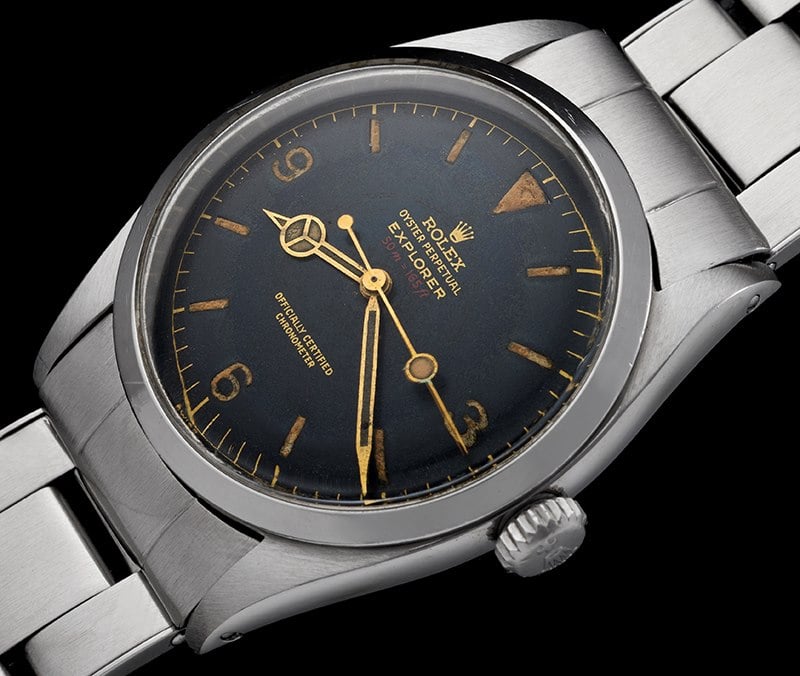
The Explorer Ref. 1016, introduced in 1963, is certainly the most famous edition, with the longest production period of all the Explorers, until Ref. 14270 replaced it in 1989. Needless to say that it is this model that most people associate as the archetypal Explorer. The Rolex Explorer Ref. 1016 was very close the older Ref. 6610 in terms of design and of technical content. It went under two production periods. During its first phase of production, which lasted up until approximately 1971, it was equipped with the Calibre 1050. Then, Rolex replaced the Calibre 1050 with the more modern Calibre 1570 and increased its water resistant from 50m to 100m.
Launched in 1989, the Rolex Explorer Ref. 14270 surprised collectors, since it left aside the pure tool / utilitarian character of the 1016, by successfully moving to a more formal result, which made it more modern and more refined (like the rest of the Rolex collection). The case was different, being beefier and slightly thicker, however it retained the 36mm diameter. The glossy black dial and the white gold 3-6-9 indices gave to the model a greater level of versatility and made it appropriate in any situation. The comfortable Oyster bracelet also remained (with solid links) however the Plexiglas was replaced with a sapphire crystal and the movement now was the faster beating Calibre 3000.
In 2001, Rolex replaced the 14270 with the new Rolex Explorer Ref. 114270, which had the Calibre 3130. To this exception, it was the same watch as the previous reference. The biggest change in the family came in 2010 when, in Baselworld, Rolex introduced the Ref. 214270. The case became bigger, with 3mm more (now 39mm), which led many Rolex devotees to state that the model lost its classic proportions. The Oyster bracelet was now solid all around (including the end-links) and the movement was the Calibre 3132, an in-house self-winding mechanical movement featuring a bigger base plate, Parachrom hairspring and Paraflex shock absorbers, offering greater resistance to shocks and to extreme conditions. Beating at 28,800vph with a power reserve of 48 hours, the 3132 is a certified chronometer, a designation reserved for high-precision watches that have successfully passed the Contrôle Officiel Suisse des Chronomètres (COSC) tests. Recently, Rolex introduced a revised Explorer but kept the same reference number.
The 2016 Rolex Explorer 214270 Mk2
For the sake of the article, I will refer to the previous Explorer 214270 as the Mk1 and the 2016 edition of the 214270 as the Mk2. Brice has already previewed the latest reincarnation of the model here, however I will attempt to give a more hands-on and personal view, starting from the similarities. The watches are exactly the same, proportionally speaking. They are both 39mm in diameter, with a very slim profile that creates a very comfy feeling. The Explorer’s robust Oyster case is guaranteed waterproof to a depth of 100 meters (330 feet). It’s crafted from a solid block of corrosion-resistant 904L steel. Fitted with the Twinlock double waterproof system, the winding crown screws down securely against the case. The crystal is made of flat and scratchproof sapphire.
The Rolex Explorer 214270 Mk1
This classic variation of the oyster case is, to me, one of the best designed cases of all time – and actually, even the great Gerald Genta considered it as a masterpiece. The fluid lines, the slightly curved lugs, they way it hugs the wrist and the fact that it looks stunning with its bracelet, but also with leather and NATO straps, makes it a piece of design, regarding watches, that is very hard to be surpassed. It is, to me, the definite and classic Rolex case, which resembles the iconic Rolex Oyster professional cases of the past, along with the Milgauss and the newly introduced Air-King.
The 2016 Rolex Explorer 214270 Mk2
Both Rolex Explorer 214270 Mk1 and Mk2 share the shame 3132 calibre. The Superlative Chronometer certification, recently redefined by Rolex, covers the Explorer since 2015. This exclusive designation testifies that the watch has successfully undergone a series of tests conducted by Rolex according to its own standards, which are said to exceed classical watchmaking norms and standards. The certification applies to the fully assembled watch, after casing the movement, guaranteeing superlative performance on the wrist in terms of precision, power reserve, and waterproofness. The precision of a Rolex Superlative Chronometer after casing is of the order of −2/+2 seconds per day, or more than twice that required of an official chronometer (COSC goes for -4/+6 seconds per day). The Superlative Chronometer status is symbolized by the green seal that comes with every Rolex watch and is coupled with an international five-year guarantee.
Here I must note that Rolex, by extensively checking the watch after the calibre is cased, clearly offers an alternative to the METAS certification provided by its biggest opponent, Omega. In addition, it must be highlighted that each Rolex with the green seal (a recent change happened in July 2015) not only has a 5-year guarantee and a 10-year service interval, but is also tested in accordance with Rolex new standards. My Explorer, which I bought after July 2015, has earned 6 seconds in a period of one month. Yes, you have read this correctly: +6 seconds over a period of 30 days – and that means a daily deviation of +0,2 second per day. That is an extraordinary figure for a mechanical calibre.
Detail – The hands of the 2016 Rolex Explorer 214270, longer than before
So the Rolex Explorer 214270 Mk1 has exactly the same case, bracelet, and calibre as the Mk2. They however differ in two areas, which were quite hot topics on various forums around the world. The first is the dial and the second are the hands. The Rolex Explorer 214270 Mk2 traces back to its early tool roots by introducing 3-6-9 indexes filled with luminous paint, a the first since the Ref. 1016 (the 14270 and 114270 had a line of white paint in the 3-6-9 indexes but it was not luminous – the MK1 214270 has plain indexes). That is a welcoming change in my honest opinion. The dial seems slightly more proportioned now and above all, its more readable, especially when lighting conditions are not that optimal. However, the effect of the Mk1 dial was also interesting, since the white-gold 3-6-9 numerals reflected light in a superb way in day-light conditions, producing a pleasing result. This combination created a ghost-effect when light diffused into the dial and it was like the hands and the indices were floating within. Therefore, it is fair to say that the new luminous numbers are a welcoming change, and more importantly a more historically and retro-accurate direction – but this does not make the Mk1 a less attractive variation. I would prefer the newer dial but this is not a big issue for me, just a matter of tastes.
Detail – The indexes of the 2016 Rolex Explorer 214270, now filled with luminous paint
The hands are the other big improvement introduced on the 2016 Rolex Explorer 214270 Mk2– it might just be hands, but this detail has in fact a strong importance, especially when you’re named Rolex. To be fair, the hands of the Mk1 are short and this is now rectified, with hands that are longer (and fatter) than before. This topic was highly contested in major forums around the world. Some said that Rolex kept the hands set of the 36mm and put them in the 39mm model, others tried to prove that this happened on purpose by the company. The truth is that I never notice the length of the hands in real life. I never had this moment were I didn’t understand what time was indicated on the dial – never, period! Visually speaking, yes, the hands of the Mk1 were a bit short, especially the minute hand (which was not touching the minute track), but this has never been a practical problem for me. The new hands are therefore longer but they are also fatter – and that makes the dial of the Mk2 bolder, sportier and slightly less elegant – again, to me.
Conclusion
It is true that, with the introduction of the Rolex Explorer 214270 Mk2, many people who disliked the Mk1 for its “deficiencies” will be eager to order one. Yes, now the model became sportier, more retro-accurate and looses this perfectly balanced toolish-elegance that was given by Rolex to the Explorer I model from the Ref. 14270 onward. Please bear in mind that small changes like that affect a lot a very Spartan design like the Explorer. For me, both versions have pros and cons and I am not eager to part with my Mk1.
The Rolex Explorer is for me the ultimate Oyster Professional model in the history of the company and sadly, it’s very much underestimated. It is in production since 1953 and as we saw, it marks a clear demarcation line, when Rolex moved from its early period of tool watches to the modern times of sports-luxury. The Explorer is a model that the company tested in hostile conditions and was made in order to develop the legendary Submariner and GMT, which had the same case (slightly larger), same ethos, same crown but just added a bezel functionality (for divers) and a second time-zone functionality for the GMT. Do not forget that some early Submariners shared explorer dials.
The Rolex Explorer family is an icon comparable to the Omega Speedmaster, the IWC Mark or the Breitling Navitimer. Its archetypal nature and clear lines radiate the philosophy of a company whith one goal: create simple but highly reliable, accurate watches that could be worn by everyone. Rolex, with the Explorer, managed to create a line of tool watches, fine-tuned accordingly and which wrote history on the wrists of influential individuals. Today they are not longer tool watches but they do continue to have all those typical Rolex qualities that transcend time, although they are now more luxurious than ever.
The 39mm Explorer is quite possibly the perfect watch for me. It has everything I need and nothing I don’t. If it had a date, it would become more convenient but it would break up the beauty of the dial. If it were bigger, it would not be as comfortable and would attract too much attention. It’s the perfect everyday watch; it can be worn in almost every circumstances. Its size is perfect, it has a flat profile, strong enough lume, a tool style with just a hint of flash, a great movement, a matte dial, a great bracelet, and an unparalleled pedigree. The Rolex Explorer 214270 Mk2, with the changes introduced this year, manages to keep all the qualities of its predecessor and, in parallel, it becomes sportier and more complete than ever before. Last but not least, it is now more historically accurate and I think that this is the perfect timing to acquire this legendary timepiece (at a price of 6,000 Euros).
Bibliography
- For a short history of the Explorer please check here
- For further research on Rolex Bubblebacks please check here
- Also a great place to start is the official page of Rolex

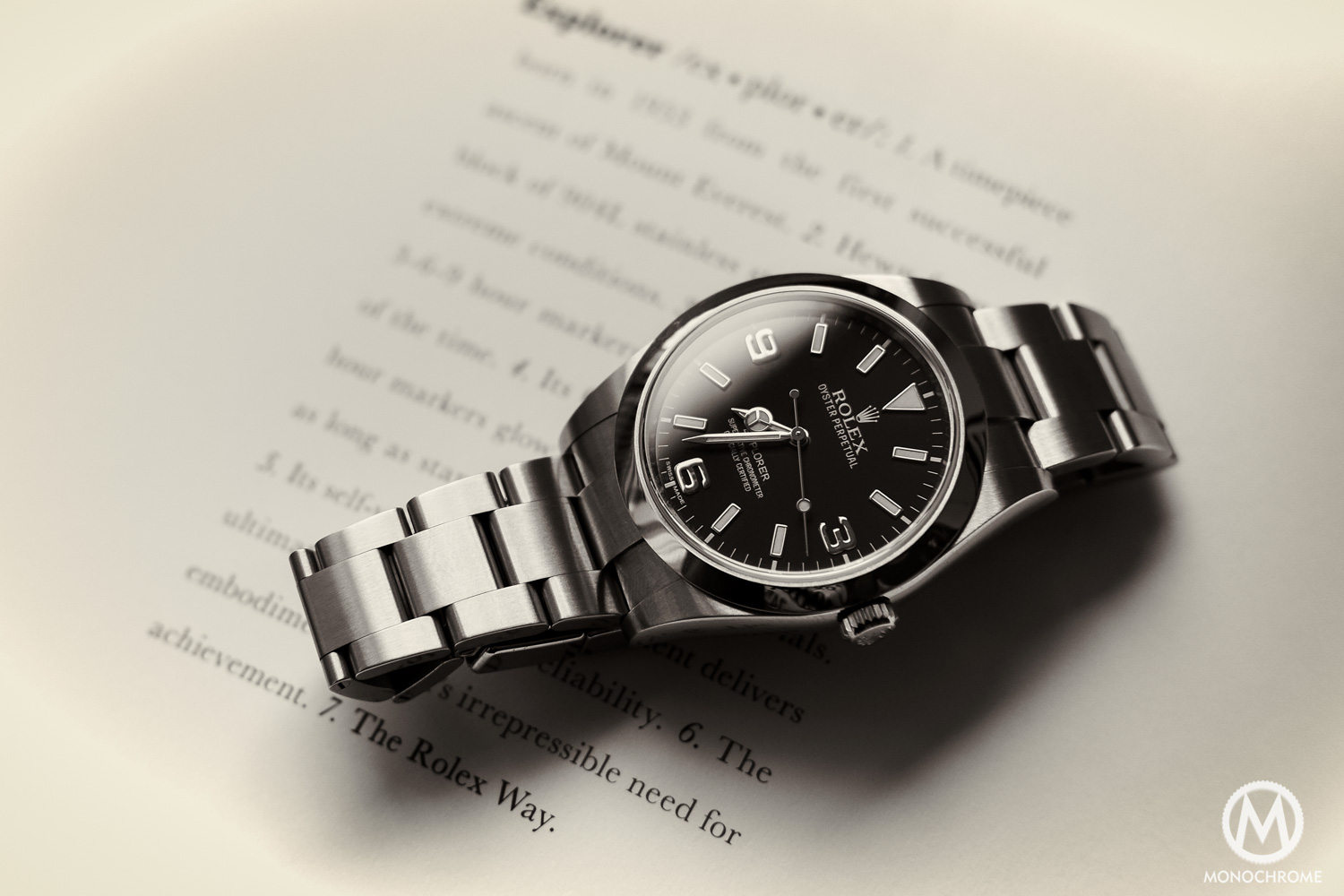

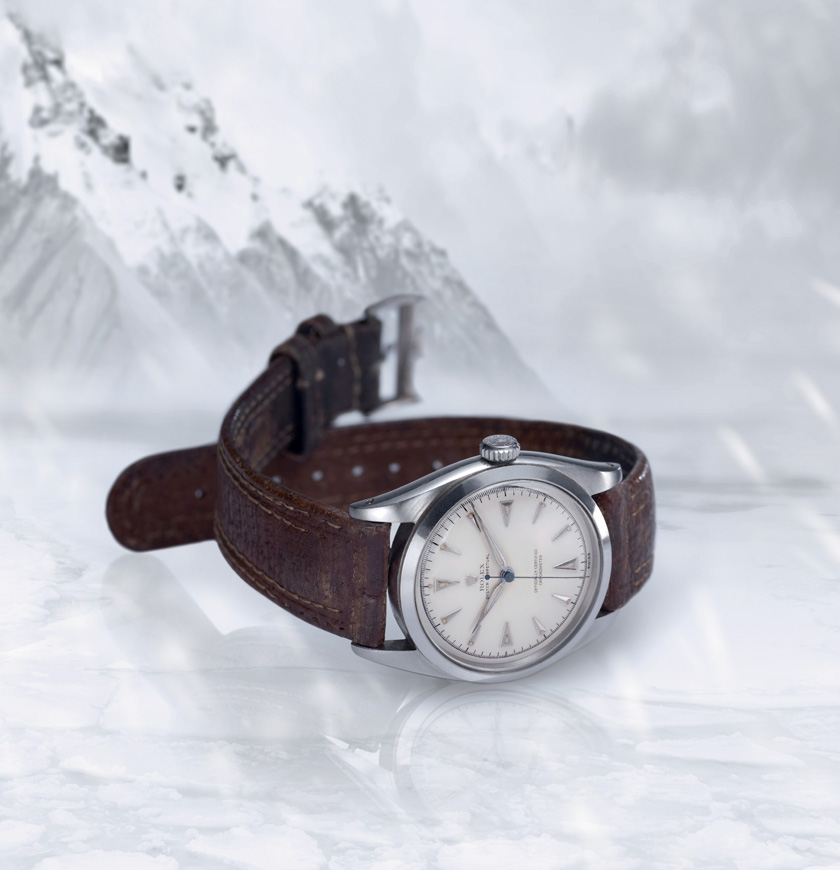
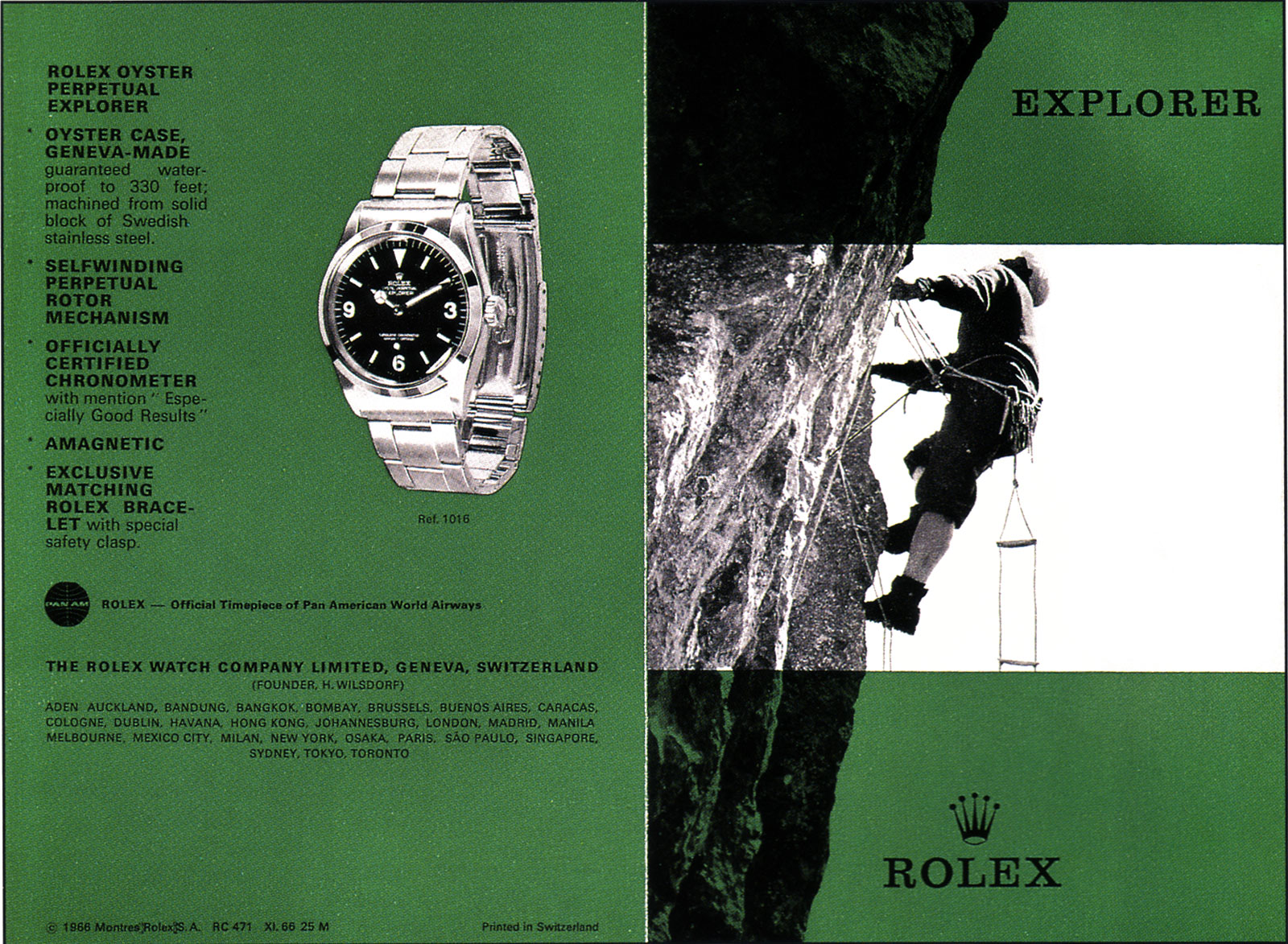
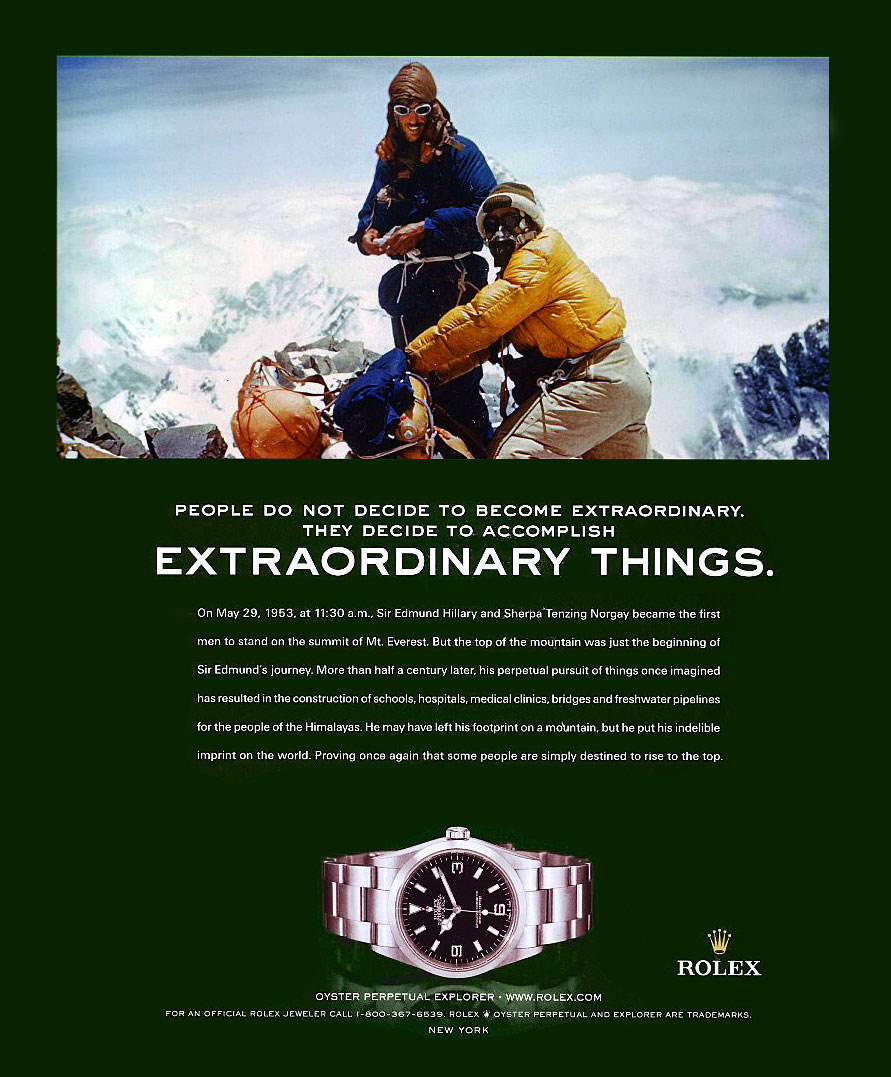
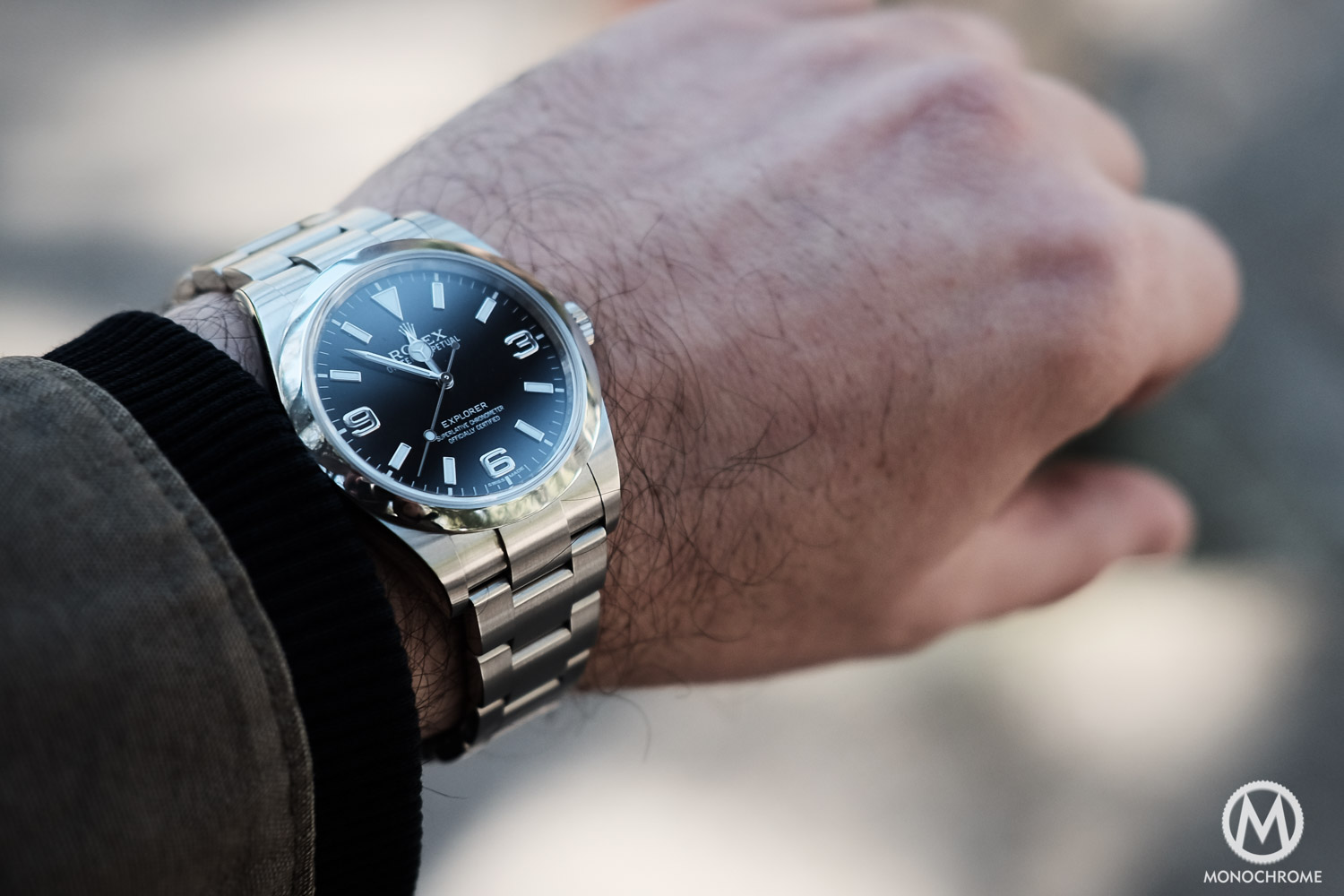
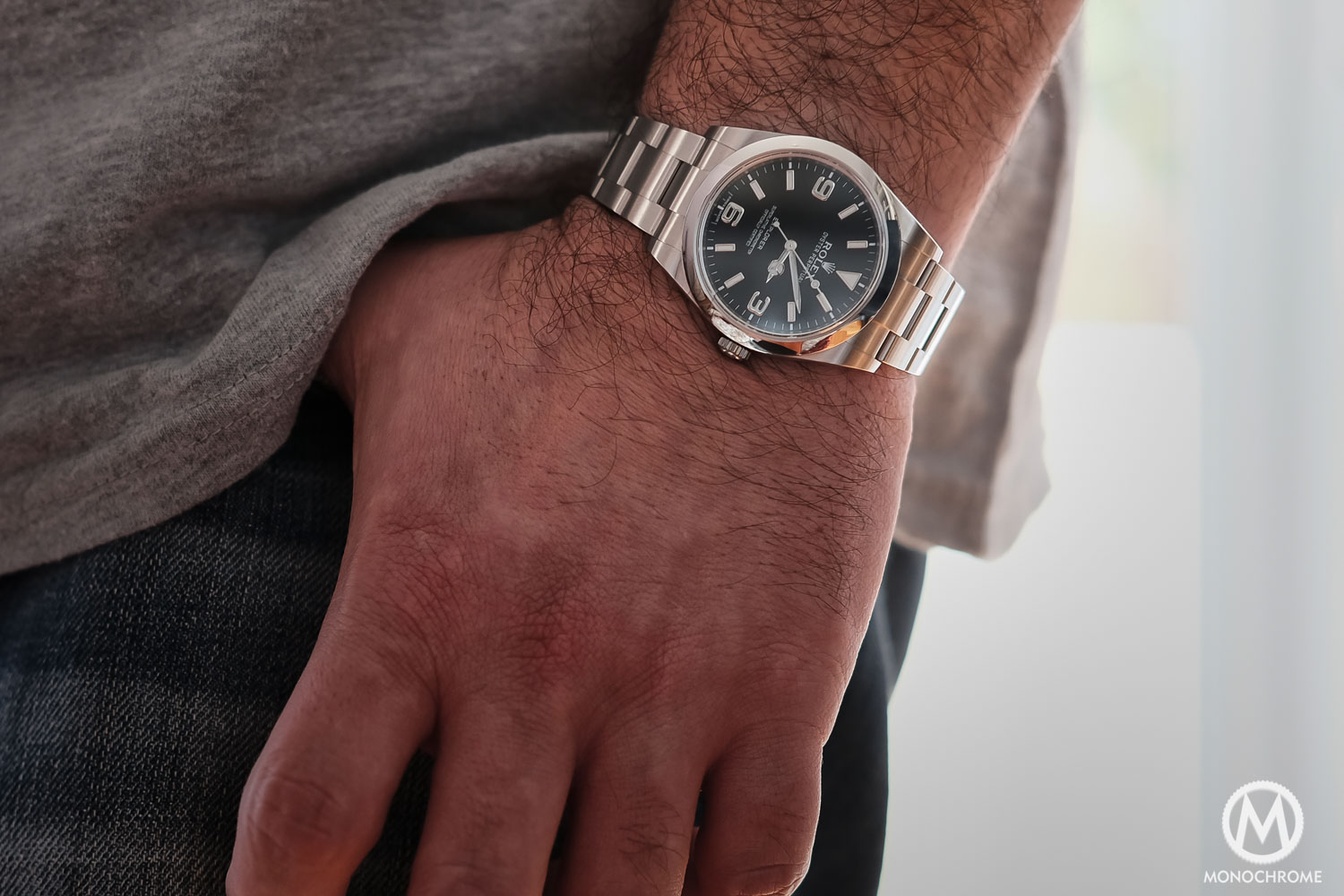

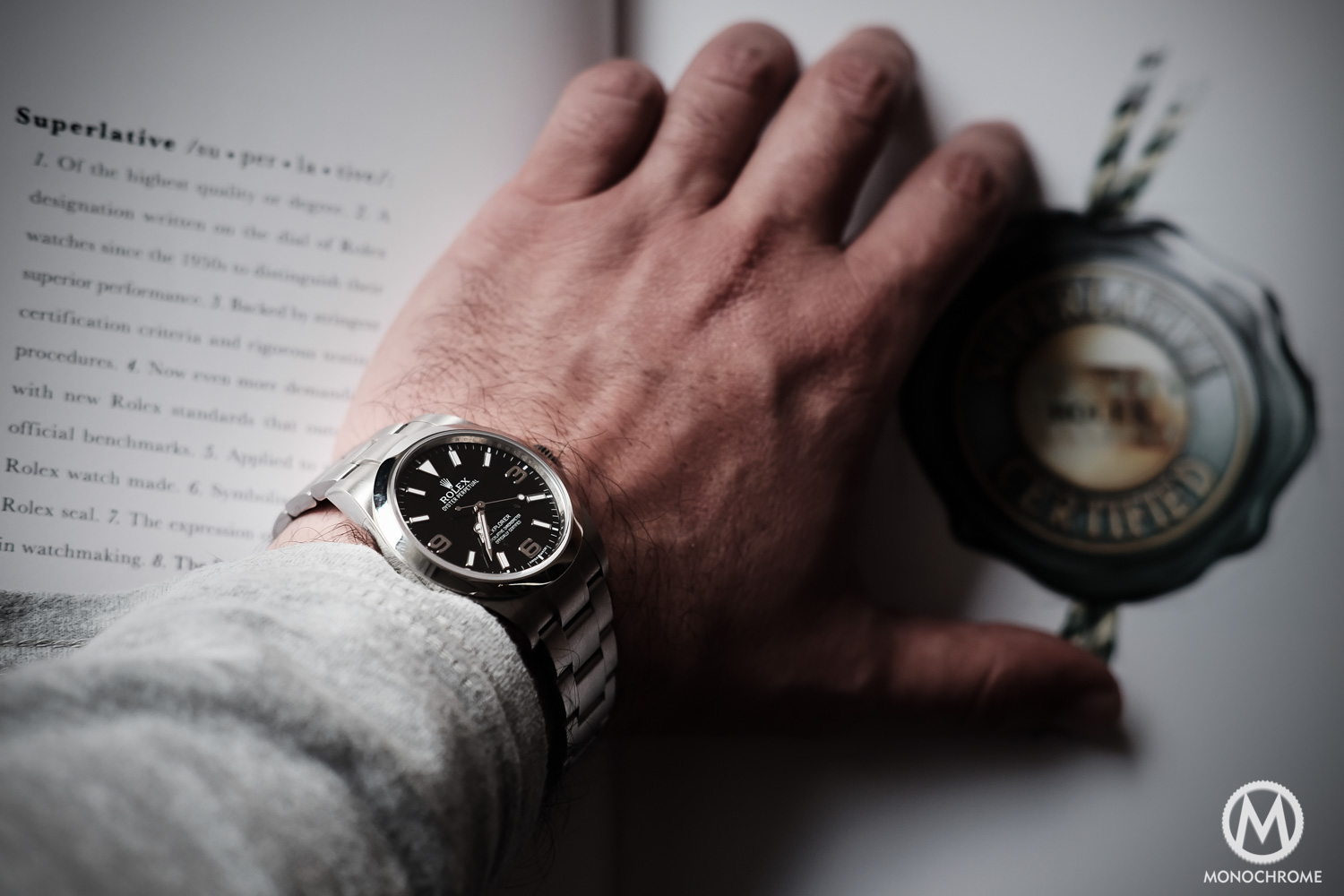
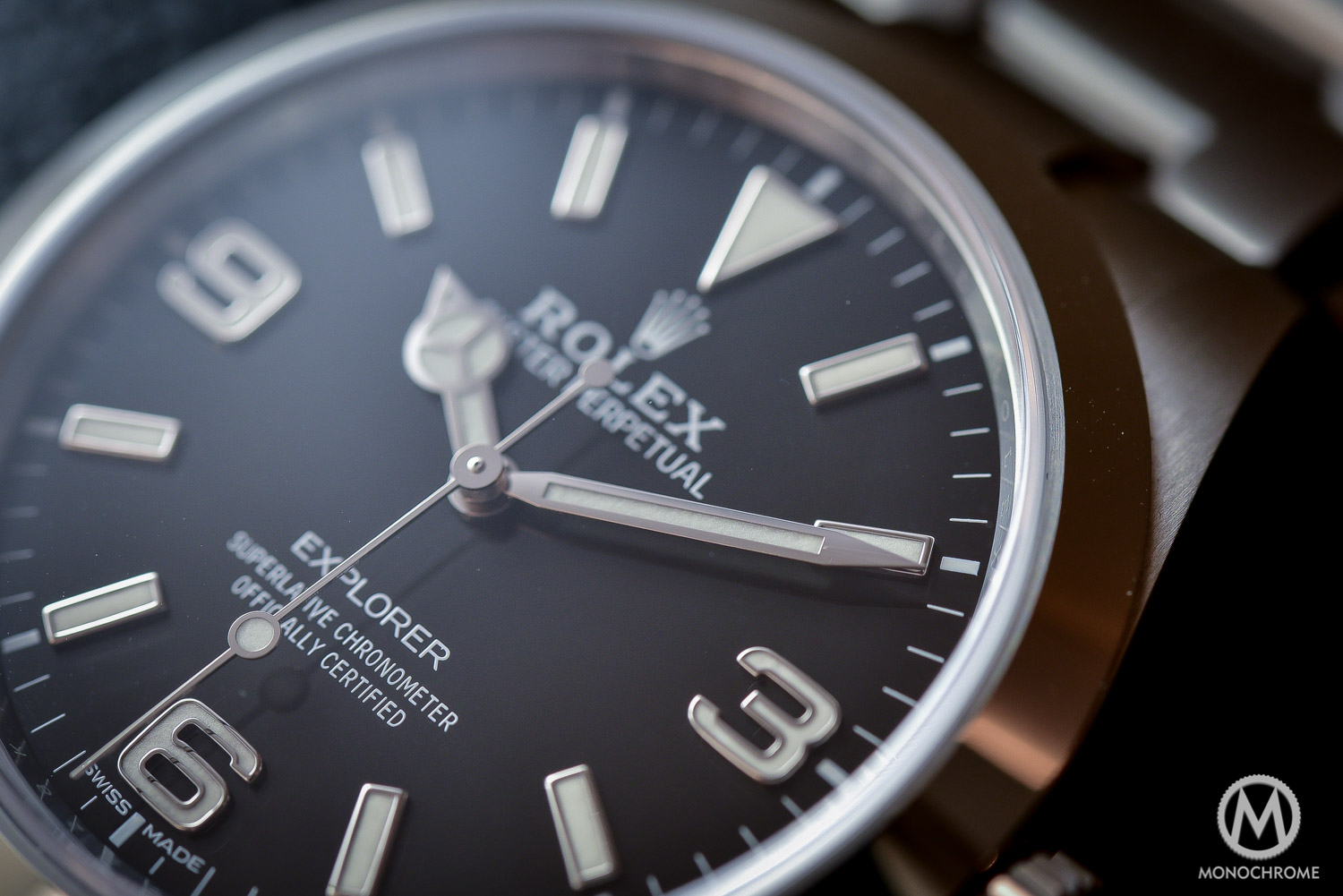
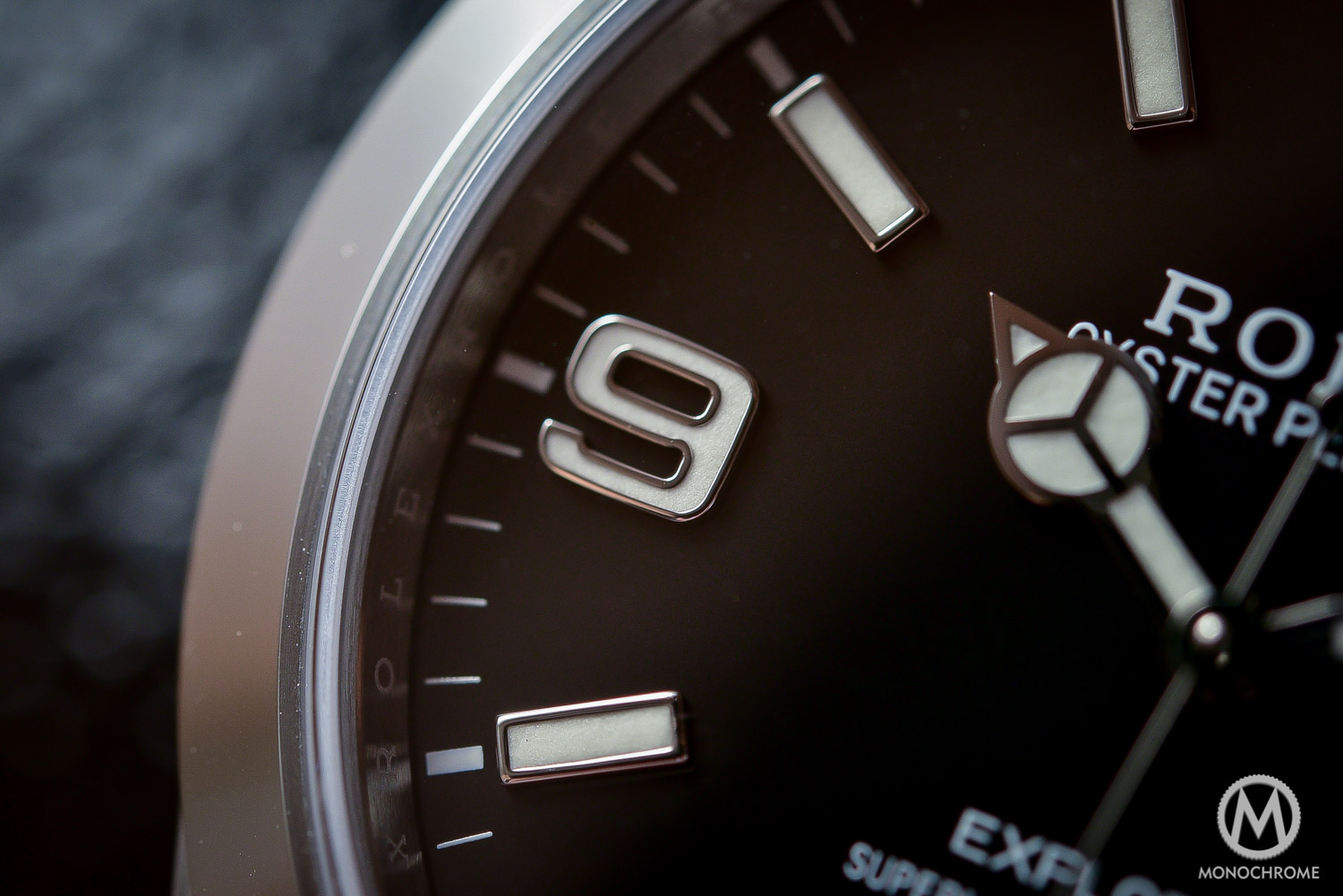
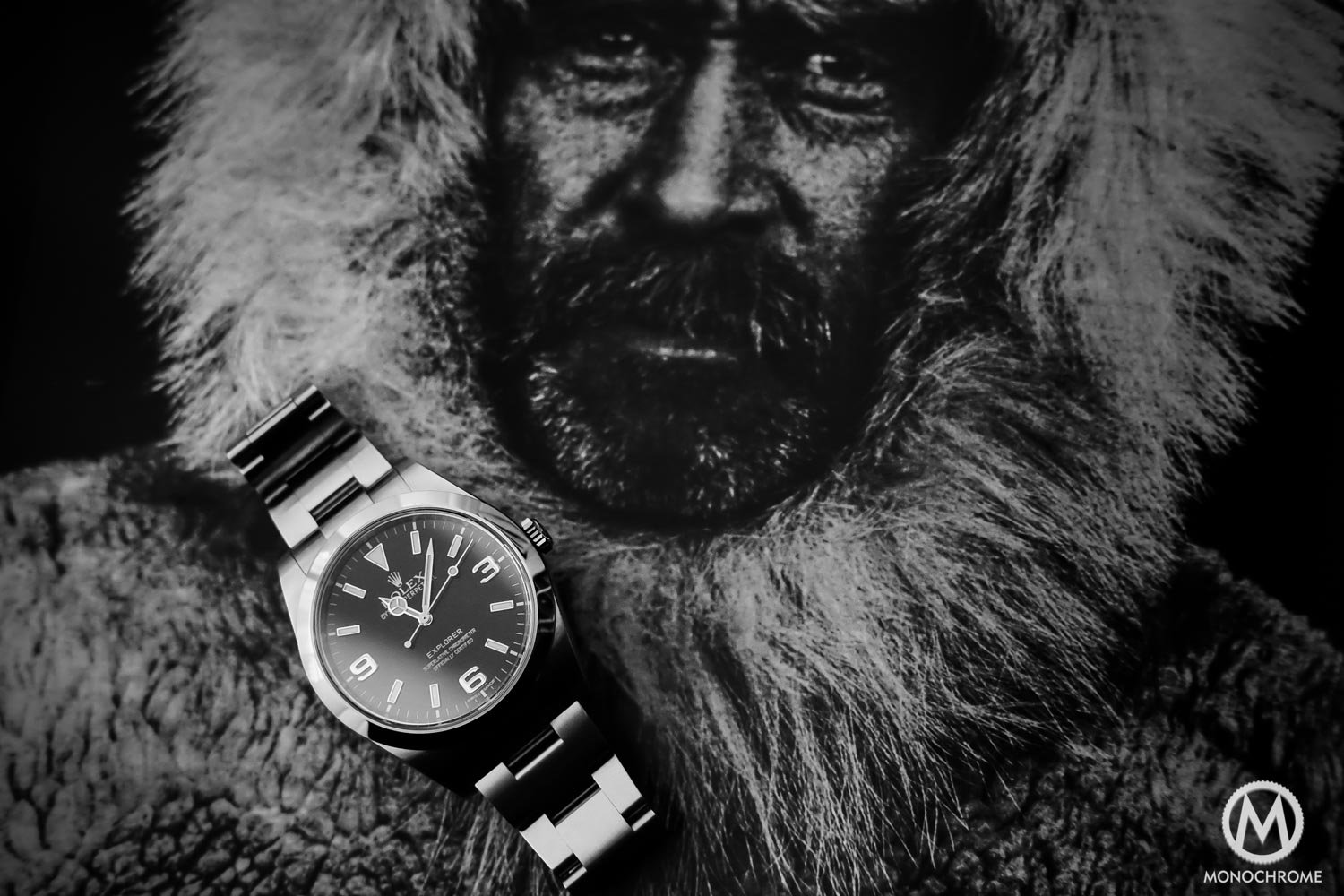
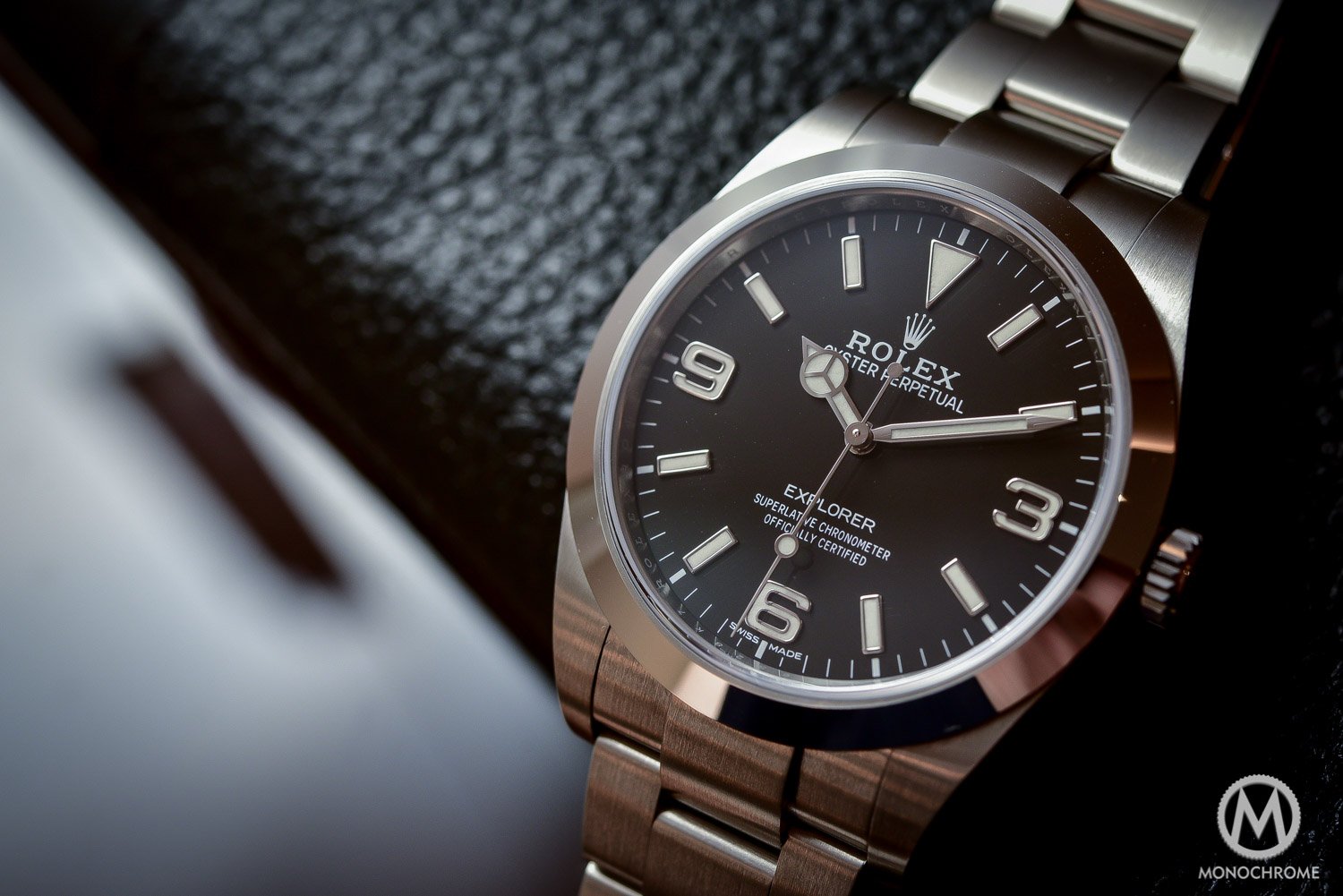



31 responses
Couldn’t agree more with your views, THE quintessential Rolex that started it all. Such a fantastic read, thank you!
Great discussion. I too have an MK I bought in 2012. I however have noticed that on several
occasions when needing to know the time late at night/early a.m., I have not been able to read it or misread it. This has caused me some consternation. The thicker/longer hands may eliminate that problem for me. However I find the non lumed.. 3-6-9 of white gold adding an
elegant touch I like. I would if possible have the new hands put on the old watch. Wonder if anyone has looked into that.
Thank you for a very balanced Rolex Explorer article. I am a vintage Rolex collector and am not a fan of modern models. However, should I find the funds to lash out and get an Explorer – the Mk 1 would be my choice. I also collect Smiths watches in particular the early 1950’s Delux ones that Hillary ‘carried’ up Everest.
I do not like watches that do not have the number twelve.
@ Ethan. Glad you like the review. Thanks.
@ Arthur. Thanks. I understand perfectly what you say. Since they share the same reference this swap might be possible coming of course from a Rolex authorized service center. However this is just a speculation.
@Robert. Glad you like the review. Thanks. Smiths watches are also favorites of mine. Great company
Damn you. I have one of these in my sights. Calling attention to this spectacular watch will only drive prices up…
Why no mention of the 42mm Explorer II
Could be a good chance to experience the two versions for the different sizes in a store.
@Don. Thank you for your nice words…. LOL. The Mk2 explorer is a hot item in various forums around the world already.
@etaboy. No mention because this article is exclusively for the Explorer I
@FulinSun. yeap
Thanks Ilias for this very educative article. I surely am not the Rolex guy but I appreciate and respect the history behind the brand – and the more I read/learn the more I respect.
Best regards,
@Andrea. I can say the same for myself. Glad you liked the article. Cheers
Very nice presentation dear Ilias. Very proud for you.
I own the mk1 and love it.. Like the mk2 too. Either is a great choice. I think the mk1 plays the sporting role as well as mk2 but plays the dress up roll better with gold 3.6.9 and more ‘elegant’ hands. Love both of them.
I have and love the MK1 but the length of the minute hand always seemed to irk me and still does. Yet, the watch retains that classic Rolex combination of elegance and sport. Would I purchase a MK2 handset for my Mk1? No. I don’t believe in “Frankening” a Rolex like so many do, but I might entertain picking up a MK2 pre-owned to add to my collection. We shall see.
What is the thickness of this Explorer Mk II watch? And weight, does anybody know.
good review and i like the look of the upgrades of the explorer , i believe the oyster perpetual was the true everest watch and the explorer was a tribute to that so dont be fooled , buy the oyster perpetual for real history the oyster perpetual came first the rest came after , if you buy the explorer it shows mount everest and mountaineers but never states that the explorer was up everest it just says oyster perpetual so anyone would think it was the explorer bit of a mind game but still its a great looking watch .
I have always been a huge fan of the Explorers, and the new 2016 Mk2 is the absolute perfect watch in my opinion. For those wondering if you can swap mk2 hands into the mk1 version, yes you can but the lume color of the mk2 is blue. The mk1 has green lume, so it would be off. If that’s truly all you want, then you would be better off selling the mk1 and buying a preowned mk2.
I recently bought a MK2 Explorer and I couldn’t be happier. The feel of in on my wrist is incredible. It’s completely legible and the tweeting from MK 1 in my opinion makes this watch a classic. Thank you Rolex.
First let me say, I have had 3 Explorers, i Plexiglass and 2 later versions but we keep changing the wallpaper. Having been involved in mountain and snows ports since my teens the Explorer 1 was the natural choice of tool watch for me. I considered buying another early this year as I missed having one but found t my horror that the new model, 39mm was the only choice available new. 39mm is far too big for such a simple watch and after much soul searching I decided to buy a new 114060 Submariner No Date which is a beautiful model and looks fine in it’s traditional 40mm size. I agree that the fashion in watches has gone big but Rolex should not be following fashion they are style setters and producers of future icons, also the “fashion” is now going smaller so everyone who has bought a mantle clock for their wrist is going to feel so silly. If Role reverts back to 36mm, who knows, I might buy another, but I am very happy with the Submariner and like the Explorer it is a perfect tool watch that can stand up to the knocks but still look good when dressed up but I am not a collector, I am a 1 watch person.
A wonderful article and a joy to read!
One line made me smile as I was one of the people who said exactly that, that Rolex used leftover hands of the 36mm on the MK1, when it was introduced and they ruined the watch for me, but with this model they literally fixed any complaints I had!
I have one more wish: make the 36mm along the 39 so people can have a choice, as I would personally take a 36mm version that was built like the MK2
Hi Ilias ,
Great review !
I recently purchased a Rolex Sub 114060 ( my first rolex) ,and really like it ,except for one drawback that i wasn’t prepared for .
I find that the lume on the watch is nowhere near as strong/bright as that on my Omega seamster 2264.50 ,which glows all throughout the night ,or in evenings when im out walking my dog ,and which i love because of its high readability in any lighting (high or low)
I very much like the new Explorer (its simpistic and conservative look) and would like to purchase it ,however am concerned that the lume on it will be the same as that on the Sub , i.e.. dissapointing .
Can you tell me wheteher it is of the same strength ..or is it stronger ,brighter ,and longer lasting ?
Alternatively is there any other watch that is comperable to it in size ,movement ,simplicity ,that you would recommend ,but that has excellent lume?
Feel free to reply to my email …Thanks Tom
Kenneth, in many case, to produce watches first manufactured in the early 50’s in their original sizes is to ignore the original design of the watch. That may sound counterintuitive, but consider that watches have never been designed as standalone objects, but as wearables. How a watch presents on a wrist is an integral part of the design. Adult males today are larger than they were in the early 50’s. The average height in 1950 was 4 inches shorter than today. Wrists have grown as well. The 36mm was designed to fit a certain way on most men. If men in 1953 had been the size they are today, then the Explorer certainly would have been a 39mm watch to begin with.
Hi, can anyone please tell me if the 3,6,9 indices in the mkII are still made of white gold or are they now steel? And what are the other indices and the hands made of?
Thanks.
Great article, and the conclusion is spot on, extremely helpful. Thanks.
Just picked up a new one by trading in my GMT-II, which though lovely, had a lot of things I don’t need. Big fan of Sir Edmund, too! Thank you for a great read!
Nearly perfect but still waiting for a reedition in 36mm…
Great report! I just bought one and absolutely love it. Best watch i have ever owned…
very interesting article, thank you
I’m curious to see if the Mk1 becomes a short run model, hence making it a “rarity” in the future.
Is the Mk1 lighter then the 136gm Mk2? I saw 126 grams for the Mk1 in an article
And while the hands are short on the Mk1 I love the way the end of the lume on the minute hand lines up exactly with the 5 minute markers to create an unbroken column every 5 minutes, it’s mesmerizing